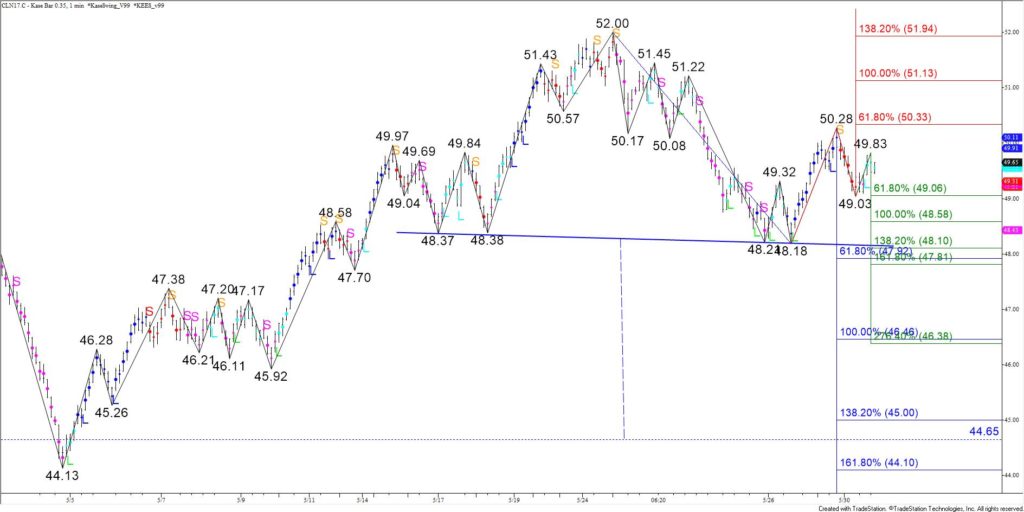October WTI crude oil continues to work its way toward crucial support at $45.6. Most importantly, this is the 62 percent retracement of the move up from $42.52 to $50.51. It is also a confluent projection for the waves down from $48.91, $48.5, and $48.2. A move below initial support at $46.1 will clear the way for $45.6.

The confluence of projections at $45.6 makes it a potential stalling point. However, today’s $46.44 settle was below the $46.5 smaller than (0.618) target of the larger scale wave $50.51 – 46.62 – 48.91. Therefore, this wave should ultimately extend to its $45.0 equal to (1.00) target. An upward correction will likely take place once $45.6 is met, but while the $48.91 swing low holds, odds will favor an eventual decline to $45.0.
That said, unstable external factors have crude and products on edge. Therefore, the move up from $45.76 this afternoon was likely short covering. Resistance at $46.9 should hold tomorrow. A move above this would call for a test of Monday’s $47.2 midpoint. Even so, unless WTI settles above $47.8, which splits the difference between Monday’s open and the 62 percent retracement of the decline from $48.91, the near-term outlook will remain negative.
This is a brief analysis for the next day or so. Our weekly Crude Oil Commentary and daily updates are much more detailed and thorough energy price forecasts that cover WTI, Brent, RBOB Gasoline, Diesel, and spreads. If you are interested in learning more, please sign up for a complimentary four-week trial.












